I’m going to be frank.
If you ended up on this article whether through searching on Google or just browsing my website then you probably already know the answer (or have a strong suspicion about the answer.)
But to remove any doubt here’s what I think about the anxious attachment style actually pushing someone away.
Yes, someone with an anxious attachment style will often push others away due to their constant need for reassurance, attention, and fear of abandonment. This pressure and unpredictability usually causes others to withdraw, as they seek to avoid the emotional intensity and turbulence. Ironically the story of relationships for an anxious attachment style is one of a self-fulfilling prophecy where the feared rejection or abandonment continually becomes reality.
But there are a few things that articles like this don’t talk about that I would like to.
Things like:
- The Co-Dependent And Anxious Link
- Looking at the six traits that anxious individuals exhibit that cause other people to leave
- The Fixed Vs. Fluid Paradigm Shift
- How The Anxious Attachment Style Pairing Typically Works With Other Attachment Styles

What Are Your Chances of Getting Your Ex Boyfriend Back?
Take the quizUnderstanding The Co-Dependent And Anxious Link
So just the other day I wrote this article on codependence.
Specifically will a codependent ex come back?
Check it out (I’m proud of it.)
One of the things I make a point of in the article is that it’s extremely probable that an individual exhibiting strong codependent tendencies will attempt to reconcile with their ex.
This led me down a fascinating research rabbit hole where I sought any potential connection between codependent personalities and those with an anxious attachment style.
The link is undoubtedly present.
In the research phase for that article, I came across an article by Jeff Gunther, a professional therapist based in Portland.
He specializes in treating relationships characterized by codependency and anxious attachment styles.
According to him, the connection is clear.
In his words, an individual with an anxious attachment style is frequently labeled as codependent.
This becomes more apparent when considering the 12 defining characteristics of a codependent personality:
- Low self-esteem
- People-pleasing
- Caretaking
- Reactivity
- Poor boundaries
- Control
- Dependency
- Denial
- Problems with intimacy
- Poor communication
- Obsessive thinking
- Chronic stress or anxiety
Many of these codependency symptoms align closely with traits seen in those with an anxious attachment style.
In my view, there’s a link, but it’s crucial to differentiate between someone who is entirely codependent and someone who is fully anxious.
I believe that a person who is entirely anxious will not necessarily exhibit every single one of these 12 codependent tendencies. Instead, they’ll likely exhibit six!
Looking At The Six Co-Dependent Traits An Anxious Individual Is Likely To Exhibit
And if you read between the lines these six traits are often responsible for pushing their partners away.
So, what the heck are these traits?
- Chronic stress and anxiety
- Obsessive thinking
- Dependency
- Control
- Poor Boundaries
- Reactivity (Harp on the extremes)
Let’s dive in to these for a bit.

What Are Your Chances of Getting Your Ex Boyfriend Back?
Take the quizTrait #1: Chronic Stress And Anxiety
Naturally, someone with an anxious attachment style—its essence quite literally captured in the name—will exhibit high levels of anxiety, often leading to chronic stress.
As I hinted at the outset of this article, there’s often a disheartening self-fulfilling prophecy associated with individuals with an anxious attachment style.
Their actions, driven by a desperate desire to avoid the worst-case scenario, ironically often pave the way for that very scenario.
Much of this behavior is fueled by the constant anxiety they experience.
From the perspective of the anxious individual, their entire relationship history is marred by the threat of rejection, instances of abandonment, constant stress, persistent anxiety, and a relentless need for reassurance.
This segues into our next trait quite nicely.
Trait #2: Obsessive Thinking
Anxiously attached individuals frequently obsess over their breakups.
As I’ve mentioned in nearly every article, most of our clients who we coach exhibit an anxious attachment style.
The pervasiveness of obsessive thinking becomes glaringly evident if one browses through the daily posts our community members make about their struggles with their exes.
Like this…
And this…
Of course, there is one fly in the ointment to what I’m saying here.
We typically advise our anxiously attached clients to impose a no-contact rule with their ex.
For many, especially those with an anxious attachment style, implementing the no-contact rule can be incredibly challenging, possibly exacerbating the obsessive thinking.
But the degree of obsessive thinking I’m addressing here is so extreme that it monopolizes all attention, making it impossible to focus on other aspects of life.
Of course, occasional worries and stress are a part of life, but this level of obsession is extreme to the point of being unrelenting.
Trait #3: Dependency
This one is drawn directly from the codependency playbook, is another notable characteristic.
Anxious individuals often feel incapacitated without their partner and harbor a deep-seated fear of abandonment, leading them to remain in unhealthy situations for fear of being alone.
This is similar to a topic I’ve frequently discussed this on my podcast: Investment.
Arguably the most important of the six main commitment factors.

What Are Your Chances of Getting Your Ex Boyfriend Back?
Take the quizOne of the common reasons people remain in relationships, despite possible dissatisfaction, is their reluctance to see their invested time go to waste.
They’d rather be unhappy within the relationship than risk stepping outside of it.
Their fear of solitude underpins this choice.
For someone with an anxious attachment style, their deepest, most triggering fear is abandonment.
They cannot bear the thought of being alone and so they often refuse to acknowledge the toxicity of the situation they may have found themselves in.
Trait #4: Control
The aspect of control was another trait that struck me.
While codependents often feel the need to control others, I’ve observed that anxious individuals often need to feel control within the relationship.
They might resort to manipulation, guilt-tripping, and unsolicited advice.
I wish this behavior was only reserved for their romantic partners, but we’ve seen multiple instances where our clients have misrepresented facts to our coaches, almost as an attempt to manipulate us into providing quicker responses.
So, this pattern of control extends beyond the relationship with their ex—it permeates their interactions with others around them. All of this traces back to the central theme behind the anxious person’s behavior—it’s about regaining control.
And if we unpack this fibonacci doll even further, everything circles back to that core wound—the fear of abandonment.
The most effective defense against abandonment, in their view, is to control everything.
Trait #5: Poor Boundaries
Another issue is poor boundaries.
It’s not that anxious individuals fail to recognize the need for boundaries. That’s a widespread misconception about the anxious attachment style.
They understand the need for boundaries but often struggle with enforcing them.
I’ve personally experienced this, especially with my children.
There are times when I tell my children they can’t have something, only to relent later in the day. This example demonstrates poor boundary enforcement, which doesn’t set the child up for successful relationships later in life.
The situation is somewhat similar for an anxious individual—they recognize the need for boundaries and understand that it’s crucial to step back from certain situations.
However, they fail to follow through.
Actions need to take precedence over words, as words can only go so far.
Trait #6: Reactivity
There’s also the aspect of reactivity to consider.
Often, anxious individuals exhibit extreme emotional reactions to others’ thoughts or feelings. They tend to take things very personally, even when it’s not directly about them.
This can be challenging to navigate, especially when considering that we’re dealing with extremes here.
In high-stress situations like a breakup, this intensity can fluctuate wildly.
The Fixed Vs. Fluidity Argument With Attachment Styles No One Seems To Talk About
When delving into the anxious attachment style, it’s first necessary to comprehend the nature of attachment styles themselves.

What Are Your Chances of Getting Your Ex Boyfriend Back?
Take the quizOne of the thing that always annoys me about the authorities in the attachment space is they neglect to harp on the fluid nature of attachment styles.
For example, frequently, I’ll encounter someone who believes they have a good understanding of attachment styles, yet when I explain the fluid nature of them and how they work they’ll often look at me and say,
“Wow, I’ve never heard that before. That’s amazing.”
Attachment styles are not permanent.
People may think that if they were raised in a challenging environment and developed an anxious attachment style, they will always be anxious, which is not true.
What makes attachment styles so fascinating, and in my opinion, one of the best areas to study to understand someone’s behavior, is the unique interaction they create, regardless of whether the attachment style is secure or insecure.
It’s as if there’s a chemical reaction at play, which makes the use of ‘chemistry’ to explain feelings for someone apt, even if it wasn’t a conscious decision.
Your childhood impacts your attachment style to an extent, but your current experiences also shape it.
For instance, a family death can make you more insecure.
Or to use an example hitting closer to home perhaps, if you were very secure and then engage in a relationship with someone who’s extremely insecure, a tug of war ensues.
One where sometimes the secure person can lose,
Or sometimes they can win,
This is a concept I call secure attachment gravity.
It basically helps explain how a secure individual can become more insecure due to their insecure partner’s influence but the reverse can also happen. An insecure individual can learn from observing how their secure partner handles issues.
Now, let’s examine the anxious attachment style in more depth.
Looking At The Anxious Battle In-Depth Across Different Attachment Styles
We’ve established that the anxious attachment style unintentionally pushes people away due to a self-fulfilling prophecy.
I want to illustrate this battle of attachment styles when an anxious individual enters a relationship with:
- A secure
- A dismissive avoidant
- Another anxious
- A fearful-avoidant
The dynamics aren’t as straightforward as you might think.
Anxious With Secure
Individuals with an anxious attachment style can strain the endurance of their secure partners by necessitating a heightened level of reassurance, and displaying a tendency towards anxiety when the secure partner cannot provide a swift or comforting response.
This may push the secure partner towards a more dismissive attachment behavior during interactions—despite their inner sense of security, the excessive demands of the anxious individual can exhaust anyone’s patience.
However, if these issues are not overly severe, the secure partner’s consistent and patient reassurances can gradually nudge the anxious partner towards a more secure attachment, even in instances when the latter’s demands may seem unreasonable.
(Remember that secure attachment gravity concept I referenced above)
Most likely though, the secure partner may occasionally feel burdened with the weight of maintaining the emotional stability of the relationship single-handedly.
During times of stress, the anxious partner may revert to anxious and self-focused behaviors, which can appear to the secure partner as a lack of commitment or reliability.
However, if the relationship manages to thrive and the anxious partner gradually gains more security over time, these challenges will likely diminish.
Anxious With Anxious
This is where the conversation becomes really unique.
I’ve actually found there are two camps on this pairing.
One side, like the argument on this website believes:
A pairing that typically concludes abruptly and unfavorably as both individuals struggle to predict and meet each other’s needs. While it’s not entirely out of the question for two mildly anxious individuals to form a bond and learn to cater to each other’s needs for security, such a scenario is uncommon.
Another side, like the argument on this website believes:
As noted earlier, individuals with an anxious attachment style are often inclined towards intimacy. Therefore, two such partners could potentially satisfy each other’s craving for closeness, along with their own needs, without worrying about causing discomfort or repulsion. However, these relationships could also present considerable challenges, leading to intense bouts of jealousy and tumultuous arguments.
I’ve been sitting on this article for half a day before writing it and I still don’t know which camp I come down in so I think I’ll take the diplomatic approach and say the truth probably lies somewhere in between both arguments.
Here’s the thing though.
This pairing is pretty rare.
Whereas the next one isn’t.
Anxious With Avoidant
This is a quintessential example of a long-term yet dysfunctional partnership.
The two types—one undervaluing attachment and the other overvaluing it—result in a co-dependent dynamic filled with tension and unease for both parties. Because the dismissive partner may actually find validation in viewing others as needy and clingy, and gain a sense of control over the relationship by providing just enough responsiveness to keep the anxious partner uncertain yet engaged, the dismissive partner may be content with a long-term arrangement.
On the other hand, the anxious partner may be dissatisfied with the minimal emotional sustenance provided but chooses to stay in the relationship due to fear of loneliness and the apprehension of not finding another relationship.
Anxious With Fearful
This pairing bears some similarity to the dismissive-anxious combination, though it tends to be less stable.
The avoidant partner will likely feel less at ease with the persistent demands for reassurance from the anxious partner and is less prone to enduring a lengthy relationship spent resisting intimacy.
If the avoidant partner permits a genuine level of closeness, it activates their anxiety; if they maintain distance, the anxious partner becomes dissatisfied and amplifies their requests.
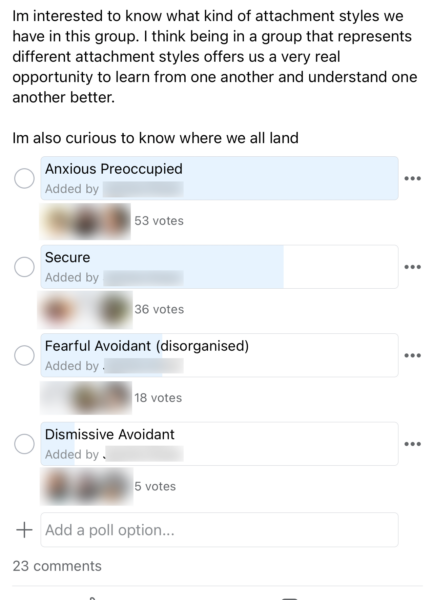

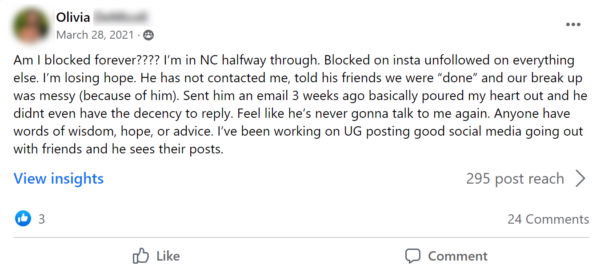

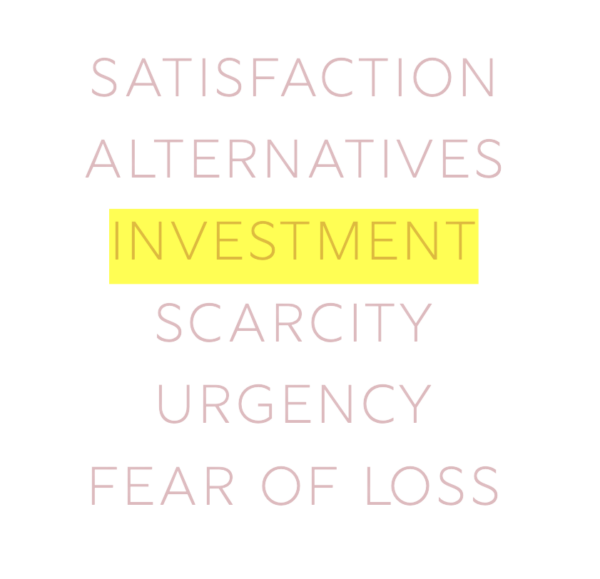
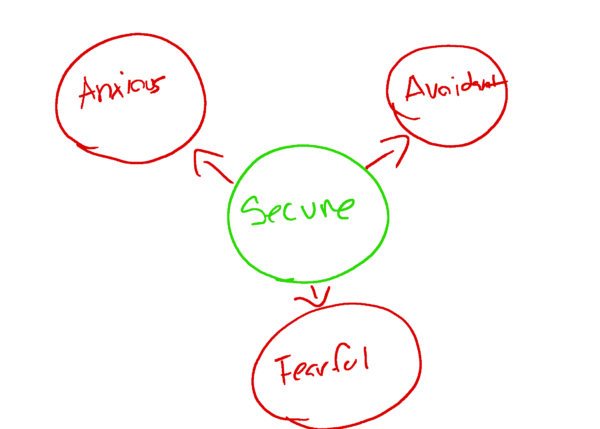
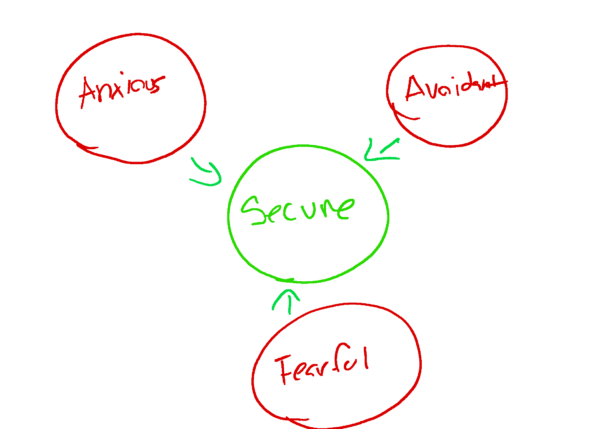
Tina Penn
September 12, 2024 at 2:10 am
This is such a good article. So insightful and helpful seeing the link with co-dependent traits and anxious attachment style.